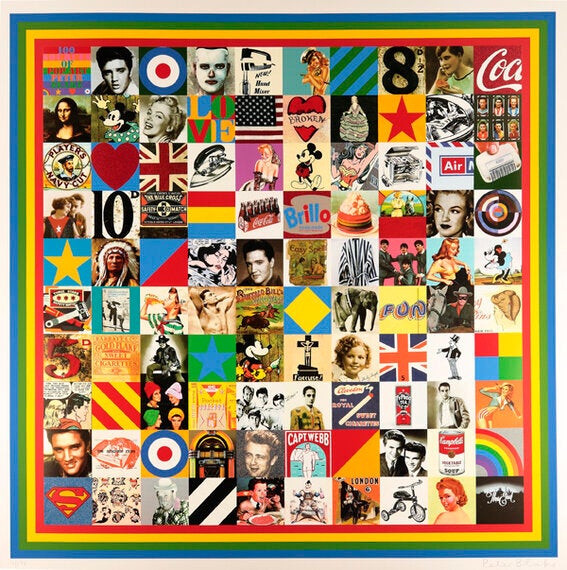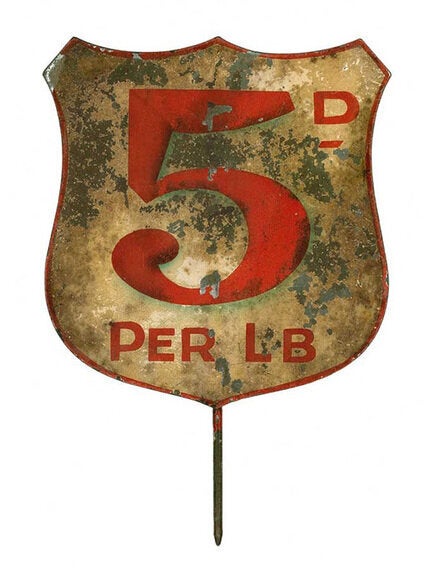You might think that at the age of 82, Sir Peter Blake might be content to pack away his drawing board, put his feet up and look back on a glittering career. After all, it was 60 years ago that he first began taking images from popular culture and designating them as art.
He, as a lone figure at the Royal Academy of Art in the mid-1950s, along with American artists such as Jasper Johns and Robert Rauschenberg, and fellow Brits Richard Hamilton, Eduardo Paolozzi and other members of the Independent Group at the ICA in London, were the originators of the Pop Art movement.
But Blake is entertaining no thoughts of retirement. In fact, the past few years alone have seen him designing fabrics for Stella McCartney, jackets for Penguin books, record covers for such as Oasis, Brian Wilson and Paul Weller, a portrait of The Queen for the Radio Times, a painting for St Paul's Cathedral and illustrations inspired by Under Milk Wood for an exhibition in Cardiff. To name but a few.
I caught up with him at CCA Galleries International's exhibition, Jersey Bounce, in the Georgian grandeur of the transformed Royal Court House in the Jersey capital, St Helier.

The show is a mix of old favourites, re-workings and new prints. His 100 Sources of Pop Art (above), for example, is a self-explanatory never seen before print that includes among the Warhols, Liechtensteins, Hendersons some of his own images. The use of bright, primary colours exudes a sense of joy and optimism that defines his contribution to the movement.
"This picture idea started as two quite small ones and I went to seven and then decided that was enough", he explained. "Then last year I drew one which was 100 and that seals it forever. I'll never do another one."

One of the features of Pop Art is taking everyday objects and changing their context. Among a series at the show entitled Found Art, is 5d per Lb (above) an image of the sort of sign you might have seen everyday in a 1960s greengrocers.
But by scanning it and having it blown up in high definition, it achieves two things. First, it becomes akin to an abstract painting and secondly, as Blake enthuses, it achieves more clarity.
"The technology is such that what I find really exciting is the bigger you go, the clearer the image becomes. You're seeing things you couldn't see on the small scale... The excitement is an object like this is very beautiful and to make it large you discover something else."
In a similar way, he has taken a photograph of Marilyn Monroe, a favourite icon, blown it up and added diamond dust to give it extra sparkle, thereby enhancing the original. He's performed the same idea with old postcards of Lily Langtree, the Jersey Lily, in deference to the exhibition's location.
Blake is a magpie. Part of the fun he gets from his work is accumulating the ephemera required. For a work entitled Matchboxes for example, he found a man at a car boot sale selling suitcases full of all manner of different brands of matchboxes. When he asked the man how much he wanted for them, the reply was he could have them for free but it'll be a fiver for the suitcase.
It's a similar story for his collages. His most famous was for the cover of the Beatles' Sgt Pepper album which made Peter Blake a household name. In fact, one of the pictures in Jersey Bounce is an updated version of it featuring images of his own friends and heroes.

For a new work, the collage Aquarium Large (above), a re-working of an older piece, he turned once again to the fruits of a car boot sale. He'd picked up a set of 12 Larousse encyclopaedias on animal life.
"It's in French, it's useless, so I thought shall I cut it up? And once I did, tons of material came from them."
The work has three aspects - the diversity of fish, the toys such as the ships you see that are put into aquariums, and the people who come to view.
Using images from popular culture in the 1950s was pushing the boundaries of art, creating a debate about whether there should be "low" or "high" culture. Within the context of Pop Art itself, Blake has always tried to extend its scope.
One early piece, Four Preps, for example, he introduced sound into painting by including a disc with the idea that you played the record and then read the list of people illustrated in the work.
Decades later, he is using technological advances to help push the boundaries by including a new series of 3-D printed works, produced by the Coriander Studio fine art printers, of childhood toys and implements under the title Wooden Puzzle Series.
"I have two mottos in my life", he tells me. "One I used when I divorced my first wife is 'Living well is the best revenge'. The other is 'Stay ahead of the avant-garde'."
Jersey Bounce is at CCA Galleries International, Royal Court Chambers, 10 Hill Street, St Helier JE2 4UA until 31st October 2014.
The images are used with the permission of the artist and gallery.